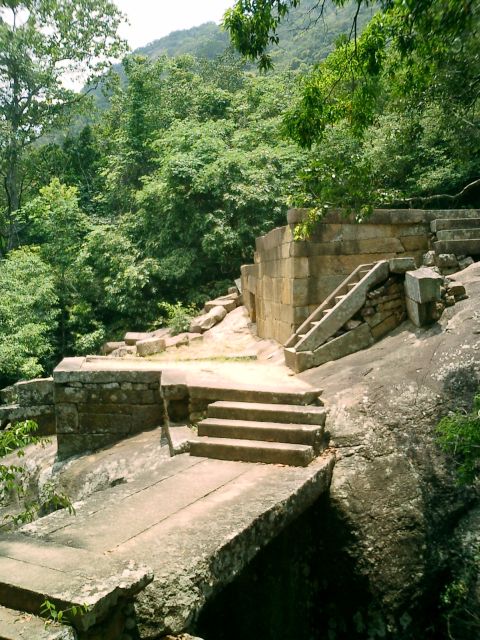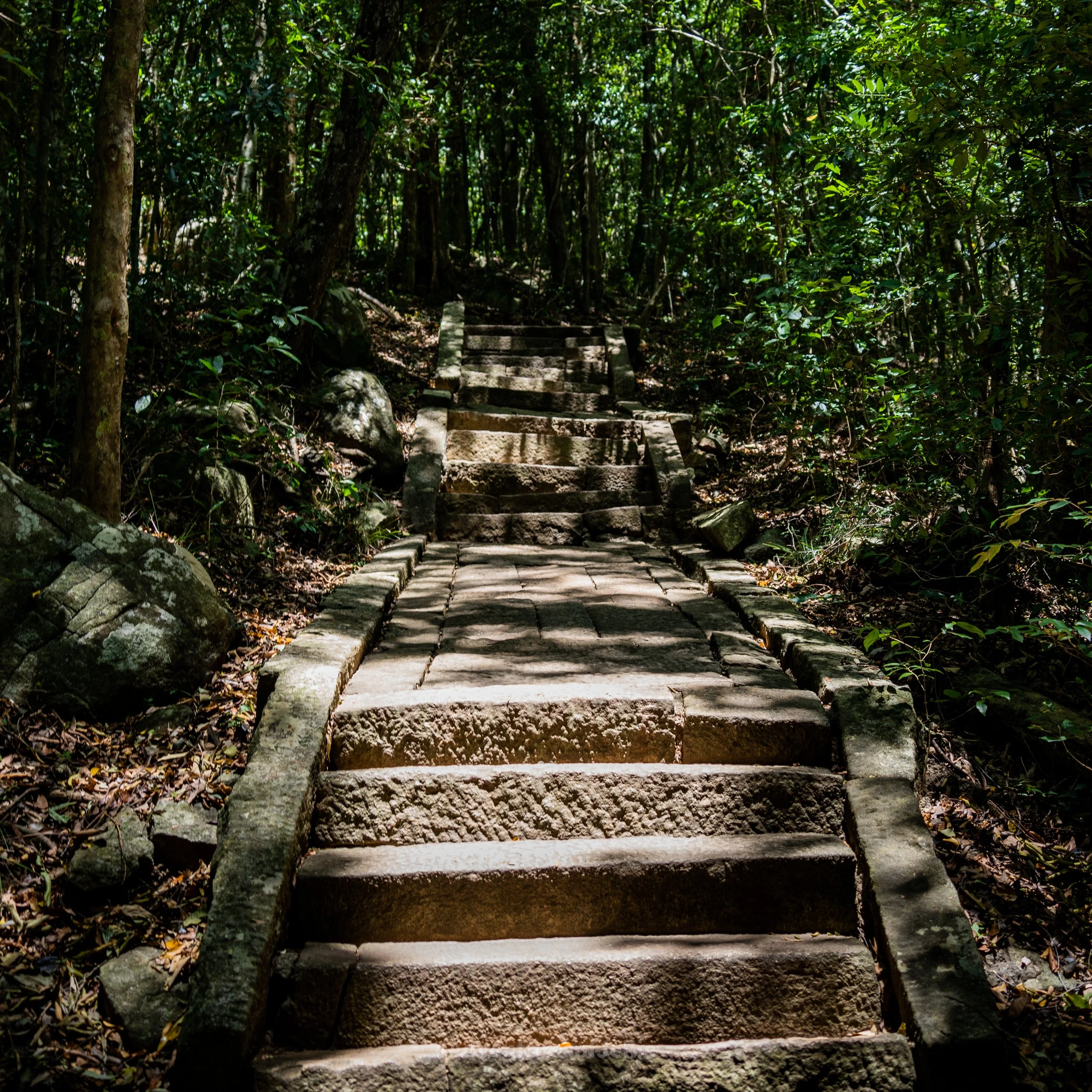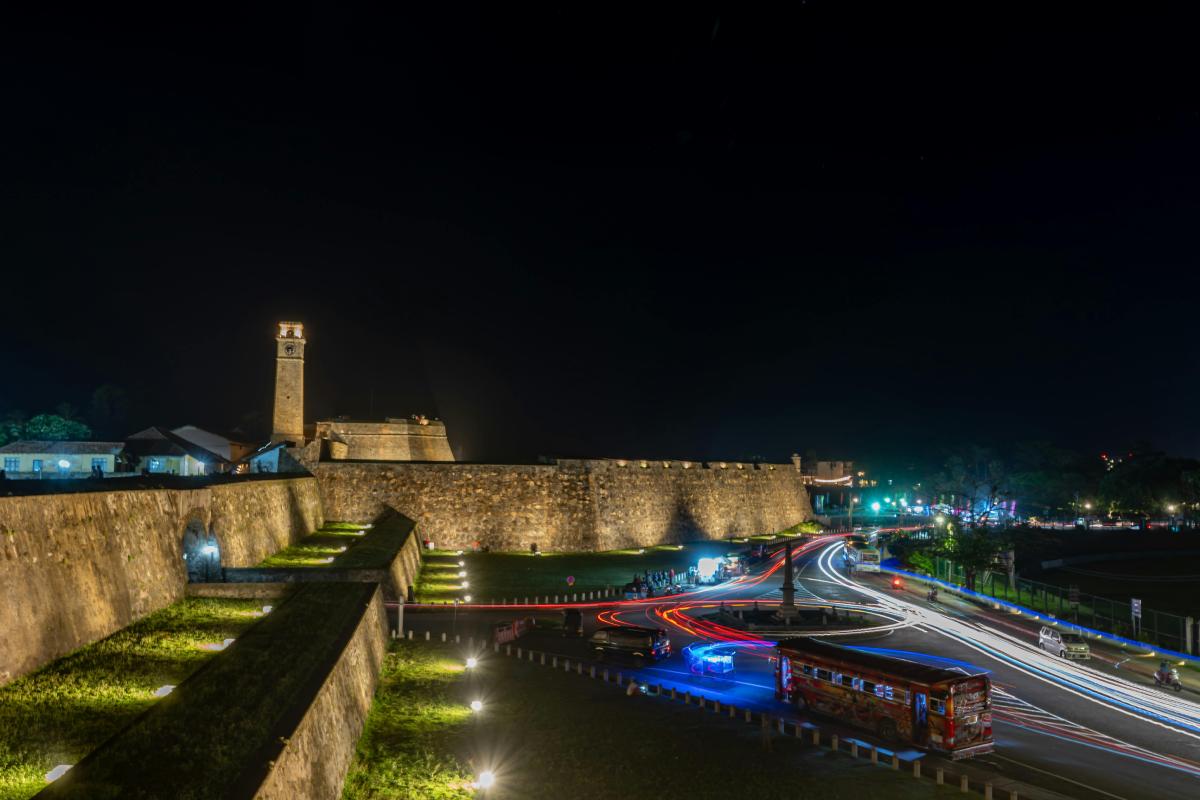Hidden in a cool, mist-wreathed pocket of Sri Lanka’s interior, Ritigala is less a single monument and more a secret folded into the landscape — a cluster of ancient stone platforms, carved steps, and weathered reservoirs that peek out through dense forest. For anyone who loves history, hiking, or the kind of hushed places that make you feel tiny in the best way, Ritigala delivers: spiritual atmosphere, mysterious legends, and a living museum of both nature and civilizations past. This guide will walk you through the story of Ritigala, what to expect on a visit, practical tips, and why this site belongs near the top of any Sri Lanka itinerary. Wikipedia+1 Ritigala Forest Monastery.
Why Ritigala feels like a different world
Ritigala sits within a Strict Natural Reserve — a patch of wet, evergreen forest atop a massif that rises dramatically out of the surrounding dry plains. Unlike the broad plains of nearby Anuradhapura, Ritigala’s higher elevation creates a cooler, misty microclimate that feels almost temperate; sunlight filters through dense foliage, and air smells of leaf mold and ancient stone.
The ruins themselves are not a single grand temple but an intimate, fragmented complex of monastic platforms, meditation cells, and reservoirs that blend into the forest, often half-hidden by creepers and the trunks of old trees. Holidify+1
A short (but fascinating) history -Ritigala Forest Monastery

Ritigala’s recorded story stretches back many centuries. Archaeological and historical evidence suggests a monastic presence here from at least the early centuries BCE through the medieval period, making it one of the older Buddhist monastic sites on the island. The complex seems to have functioned both as a monastic retreat for ascetic practitioners and a site that attracted devotional visitors. Over time, as political and social centers shifted, the site was largely abandoned to the forest; what visitors see today are the fragmentary remains of stone platforms, steps hewn from bedrock, and vestiges of buildings that once housed meditation cells and communal spaces. Adventures of Jellie+1
One of the most striking features is the ancient reservoir — Banda Pokuna — whose form and engineering suggest careful planning and ritual use. Some historical accounts attribute early construction efforts (or at least significant hydrological works nearby) to the era of King Pandukabhaya, emphasizing how Ritigala was woven into the wider tapestry of Sri Lanka’s early kingdoms. Wikipedia
Legends, medicine, and the mountain’s mystical pull
What gives Ritigala much of its mystique are the stories that cling to it. Locals and traditional texts speak of the mountain harboring powerful medicinal plants, the most famous of which is the fabled “Sansevi” — a legendary herb said to confer long life or miraculous cures.
Combined with older tales of “Yakkas” (spirit-guardians) and mythic duels between giants, Ritigala’s folklore colors the visit with a sense that this is a place where the natural and supernatural overlap. Whether you take these legends literally or as cultural poetry, they explain why Ritigala has always been considered special — and why its flora and microclimate attract both pilgrims and botanists. Wikipedia+1
Flora, fauna, and the science of a little rainforest
Ritigala is ecologically special. The reserve has been studied for its unusual assemblage of plants — many species that thrive on its misty slopes are rare or endemic to the island. Botanical surveys have cataloged hundreds of plant species, including significant numbers used in traditional Ayurvedic medicine.
The higher-altitude habitat supports different species from the dry lowlands, and visitors will notice the sudden change in vegetation as they ascend the stone paths. Wildlife also inhabits the deeper parts of the reserve — monkeys and birds are common sights; larger mammals live more reclusively — but the real wildlife highlight for many visitors is the profusion of plants, moss-covered ruins, and the overall sense of an ancient ecosystem still functioning around human traces. Things To Do In Sri Lanka+1
What to see on the trail — highlights you shouldn’t miss
Ritigala is best explored on foot. There’s no neat circular tour that hands you a brochure and returns you to your car; rather, you follow stone paths and steps that lead between high platforms and small shrines, peeking into meditation cells carved out of the slope. Here are the must-see elements:
- Banda Pokuna (the ancient reservoir): A carefully constructed tank whose stone bund and remnants suggest ritual bathing and careful water management. Its presence hints at how deeply the monastic complex was integrated with hydraulic technology and ritual practice. Wikipedia
- Stone stairways and paved paths: Ritigala’s carved staircases and paved terraces are mesmerizing — the steps often feel like a deliberate choreography of movement designed for meditation. The architecture is intimate rather than grand, creating a sense of solitude. Adventures of Jellie
- Monastic platforms and meditation cells: Low stone platforms (often with carved socket-holes where wooden posts once stood) and the remains of small cells give a vivid impression of the monastic life of solitude and austerity. Amazing Lanka
- Cave shrines and rock-cut features: Scattered among the trees, you’ll encounter caves and carved rock faces that were used for quiet retreat. They reward slow exploration. Adventures of Jellie
Because the ruins are spread out and integrated with the forest, allow time — Ritigala is a place that repays slow walking and wandering.
Getting there — logistics and practicalities
Ritigala lies roughly between the ancient city of Anuradhapura and Kandy, making it accessible as a day trip from either region. Most visitors approach from Anuradhapura or through guided tour operators who include the site in cultural circuits. The reserve sits at an elevation of approximately 766 meters above sea level, which is why the climate and vegetation feel noticeably different from the surrounding plains. Visiting hours typically fall within daylight hours — entry is best in the early morning when the forest is cool and birds are active. As with many protected areas, the exact opening times and any permit requirements can vary, so plan ahead if you’re arriving by private transport or joining an organized excursion. Trawell.in+1
How to prepare — shoes, water, and what to pack
Because the terrain is uneven — with rocky steps, wet patches, and slippery surfaces — comfortable, sturdy walking shoes or hiking boots are essential. Bring:
- Stable footwear with a good grip (no flip-flops).
- A small daypack with water (at least 1–2 liters), snacks, and sunscreen.
- Lightweight rain protection (the mountain’s microclimate can produce sudden showers or mist).
- A camera with extra batteries (there are countless photo opportunities).
- Respectful clothing for a sacred site (shoulders and knees covered when entering areas of religious significance).
Insects can be present, so a light insect repellent helps, but consider eco-friendly options to avoid contaminating sensitive habitats. Also remember that there are few services inside the reserve — no cafes or clean drinking stations — so bring what you need. Holidify
Photography and the best times to shoot
Ritigala’s mood changes with light. Early morning brings cool, soft light and often mist that clings to the forest — ideal for atmospheric landscape or architectural shots. Late afternoon can produce dramatic side-light across the stone platforms. The canopy creates interesting dappled light; try shooting both wide-angle scenes that show ruins framed by trees and close-up textures of moss, carved stone, and lichen. Because much of the site is shaded, a lens with decent low-light performance or a tripod for long exposures will be useful if you’re serious about photography.
Respectful visiting — conservation and cultural etiquette
Ritigala is a protected area and contains both ecological treasures and places of religious significance. A few simple rules keep the site healthy and respectful:
- Don’t remove plants, stones, or artifacts. Taking souvenirs damages delicate ecology and archaeological contexts.
- Keep to marked paths where provided and avoid trampling fragile vegetation.
- Maintain silence around meditation cells and shrine areas; many come to Ritigala for quiet reflection.
- Carry out all litter. If you bring packaged food, take the packaging home with you.
- If you encounter wildlife, observe from a distance. Do not feed animals.
These practices help ensure that Ritigala remains a sanctuary — for wildlife, history, and future visitors. Amazing Lanka
Combining Ritigala with other nearby sights
Ritigala makes a natural pairing with a visit to Anuradhapura’s ancient stupas and monastic city or, if you’re approaching from the hill country, with Sigiriya and Mihintale excursions. Because Ritigala’s experience is slower and more meditative, many travelers enjoy contrasting a day at Ritigala with the broader, more monumental tastes of Sri Lanka’s other heritage sites. Guided day tours or a private driver can make such combinations efficient and comfortable.
Safety notes and accessibility
The trails at Ritigala are not technically difficult but they require reasonable mobility. The uneven stone and occasional steep sections mean it’s not ideal for those with serious mobility challenges. Wear appropriate footwear, stay hydrated, and avoid attempting long hikes in the hottest part of the day. There are occasional reports of wild elephants and other significant fauna in the broader reserve — standard safety around wildlife (keeping distance, not surprising animals) applies. If you’re unsure, ask local guides about recent wildlife activity before setting out. Trawell.in
Stories that linger — the human echoes of Ritigala
Perhaps what lingers most after a visit to Ritigala is the sense of layered human presence: monks carving a life of silence into the mountain; pilgrims tracing pathways to ritual reservoirs; villagers telling of herbs and spirits; modern botanists cataloguing species beneath the canopy. The stones still hold the contours of those lives — thresholds worn soft by sandals, post-holes where timber once stood, foundations that map out daily rhythms now gone. For many travelers, Ritigala is not just a place of ruins but a place that makes you feel connected to a deeper timescale: ecological cycles and human devotion woven together. Amazing Lanka+1
Final thoughts — why Ritigala deserves time in your itinerary
If you love the interplay between nature and history, Ritigala is a rare find. It’s not a polished tourist attraction full of signage and paved viewing platforms; instead it rewards curiosity and slowness. Expect fewer crowds, cooler air, surprising biodiversity, and quiet stonework that hints at the ascetic rhythm of an earlier age. Whether you’re a photographer, a hiker, a history buff, or someone seeking moments of stillness, Ritigala offers a distinct kind of pilgrimage — one that is part archaeological site, part rainforest, and part legend. Make time to sit on a shaded platform and listen: the mountain has stories to tell, if you’ll let it. Adventures of Jellie+1
Quick reference (at-a-glance)
- Location: Between Anuradhapura and Kandy (Anuradhapura District). Lakpura®
- Elevation: Approximately 766 m above sea level; cool, misty microclimate. Trawell.in
- Highlights: Banda Pokuna reservoir, meditation platforms, carved stairways, caves, endemic flora. Wikipedia+1
- Best time to visit: Early morning for light and quiet; avoid heavy midday heat or late afternoon rain. Holidify


